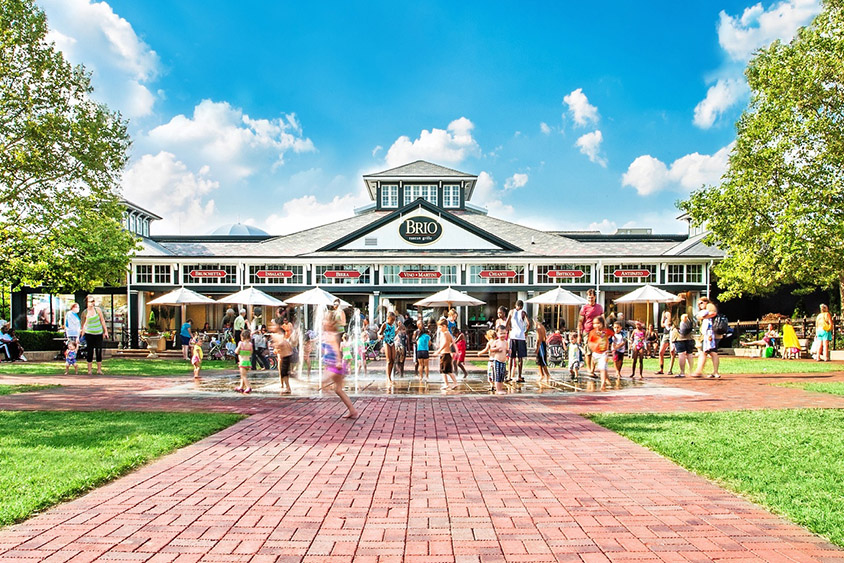Shopping Centers Today, November 15, 2016
By Joel Groover
When owners start taking equity stakes in their food tenants, the traditional roles can blur in some interesting ways, notes Spencer Bomar, an Atlanta-based principal of the national retail group at Avison Young. “In some cases [landlords] are partnering with chefs, and it is going as far as them sharing in the percentage rent,” he said. “They are becoming true business partners.”
According to a National Restaurant Consultants report on this year’s trends, the nation’s roughly 1 million restaurants racked up some $709.2 billion in sales last year, up roughly 3.8 percent from $683 billion in 2014. The firm is forecasting even stronger restaurant growth for this year, perhaps slightly better than 4 percent, amid predictions that Millennials will keep spending liberally at bars and restaurants. Along the same lines, a CBRE report published last July cites food-and-beverage as a clear outlier relative to other retail categories. “Between 2012 and 2015, the restaurant segment not only grew more than any core retail category, it also showed the clearest and most consistent acceleration — a key indicator of growth potential,” CBRE researchers reported. Last year U.S. restaurant sales outstripped those of groceries for the first time, according to CBRE’s report. The trend toward food halls, food trucks, chef-driven restaurants and the like is no fad, the researchers maintain. “There is mounting evidence that the growth in restaurant sales has more to do with fundamental lifestyle changes than purely cyclical trends,” they wrote.
The forward momentum of the food-and-beverage sector comes amid reversals elsewhere in retail. “Soft-goods retail categories like apparel are facing e-commerce penetration and other challenges,” said Melina Cordero, CBRE’s head of retail research for the Americas. “So landlords are looking toward restaurants as a high-growth category.”
But independents seeking to lease retail space often need a lot more help than their national chain counterparts, experts say. “Money is always a challenge for the independent restaurateurs, and for independent retailers, for that matter,” said Anne Mastin, executive vice president of leasing at Steiner & Associates. “These are tenants that don’t have the same access to capital as the publicly traded companies.” The cost of store build-out, in particular, is rising as more independent restaurants strive to set themselves apart with architecture, art, finishes, lighting and similar visual cues. “Customers are very demanding in today’s environment,” Mastin said. “They want that special experience.”
This is why landlords are also spending more to create sumptuous surroundings for better-quality food tenants, observers say. To create The Pizitz Food Hall, which is opening this winter in downtown Birmingham, Ala., Bayer Properties needed to make some costly changes to an eight-story department store building built in 1923. The 20 Pizitz stall operators will include purveyors of biscuits, waffles, coffee, dumplings, artisanal cheese, and Mexican, Israeli, Japanese and Hawaiian offerings. For the full-service restaurants, Bayer brought in an Atlanta outlet known for its Ethiopian cuisine and an Italian restaurant by New York City chef Akhtar Nawab and Park South Hospitality co-founder Matt Wagman. “We had to put in the exhaust systems to take care of the whole floor and vent it all out through the roof of this eight-story building, so the mechanical systems were expensive,” said Jeffrey A. Bayer, president and CEO of the Birmingham, Ala.–based development firm. “Because the booths were small, we determined that we needed to have a food-prep area as well. We built that in the lower level, serviced by an elevator and refrigeration areas.” The price tag for this renovation, which includes 11,000 square feet of offices and 143 apartments, was about $66 million. Naturally, these upfront costs put upward pressure on rents. “The rent per square foot is high,” Bayer said.
But landlords’ efforts to land best-in-class food tenants, up to and including bankrolling them as business partners, can make sense, given the benefits these operators can provide, says Bomar. He cites Atlanta chef Kevin Gillespie’s Gunshow, located in the Glenwood Park neighborhood, as the kind of restaurant that excites local diners, drives traffic and generates lots of buzz on social media. Inspired by Brazilian churrascaria-style dining and Chinese dim sum, Gunshow’s dishes are presented to diners at their tables on rolling carts and trays. “A hot chef is more in tune with consumer trends than anybody else,” Bomar said. “If you can get that chef into your center, everything else is going to follow.” This was part of the approach at Avalon, the 86-acre, mixed-use center in Alpharetta, north of Atlanta, Bomar says. “Avalon has pulled in restaurants from all over,” he said. “Their Oak Steakhouse is out of Charleston [S.C.]. There isn’t a Chili’s or a Capital Grille up there, and Avalon is absolutely slamming it. People love it.”
Urban real estate developers such as Jeffrey R. Anderson, Michael Allan Domb and Jeffrey R. Chodorow are well known for routinely forming partnerships with restaurants as part of the retail centers, hotels, condos and other projects they build. But not every developer is keen on partnerships with restaurateurs. Steiner & Associates has never taken an equity stake in a food tenant, Mastin says, although the mixed-use developer has provided a lot of capital to some concepts in the form of tenant-improvement dollars. “The restaurant business is still a very risky business with a high attrition rate, which is why financial institutions are more skittish about lending to restaurants than other categories,” she said. “We don’t want to be in the restaurant business. We want to be the best town center developer in America.”
Indeed, if partnerships between landlords and restaurants start to go south, the situation has the potential to become onerously complicated, thanks to conflicts of interest that can emerge, Orkin notes. “Let’s say the restaurant is losing money and the landlord, who controls the space, wants to take that restaurateur out,” Orkin said. “He has fiduciary responsibilities both to his landlord group and to his partner in the restaurant. When these partnerships are put together, you have to make sure you’re prepared to address the eventuality that [the restaurant] doesn’t work out as planned.”
The restaurant business, after all, is known for its high failure rate. A big part of the challenge, Mastin says, is staying ahead of the curve amid the ever changing tastes of today’s demanding epicureans. Steiner & Associates relies on in-house restaurant-leasing specialists, as well as employees who are ardent foodies, to keep its restaurant lineups current, she says. “It is important for us that we are always refreshing the restaurant category, because nothing lasts forever, especially in the restaurant world,” Mastin said.
To land operators for Pizitz Food Hall, Bayer Properties hired the authors of a blog titled What to Eat in Birmingham as consultants. The husband-and-wife bloggers — one is a physician and the other is a scientist — were critical to the success of leasing efforts for the food hall, says Bayer. They also generated valuable publicity for Pizitz. “They knew so many of the hot, rising F&B operators and made the introductions for us,” Bayer said. “These were [food operators] that had the expertise but not always the locations they wanted. We are fully leased … and I believe our leasing wouldn’t be at the level that it is without the bloggers’ help.”
Some landlords are pursuing short-term partnerships with restaurateurs in a bid to help these operators get established. “They’re taking an equity position and making the money available, but then giving restaurateurs the opportunity to buy themselves back,” said Bayer, who has formed no partnerships with any Pizitz tenants. “The restaurateur can get rid of the landlord or investment group within a couple of years and become a sole practitioner.”
Other partnerships are so successful that they last over the long haul and blossom into full-fledged businesses, says Orkin. “The restaurateur and the landlord investor say: ‘Hey, this model works. Let’s go on and build partnerships outside of specific real estate that the landlord owns,’ ” he said. “They become financial partners who do deals in third-party landlord situations. I have seen it in a number of cases with some pretty successful restaurateurs and well-known regional landlords.”
Over the years, Steiner & Associates has seen several of its food operators, including Brio and Ocean Prime, grow into popular concepts with units across the country, says Mastin. The developer, known for projects like Easton Town Center, in Columbus, Ohio, is a true believer in the power of food-and-beverage. “At Easton last year we did well excess of $100 million in restaurant volume alone,” Mastin said. “That is just the sit-down restaurants — not even counting things like smoothies, yogurts and ice cream. We have known for a long time that restaurants drive traffic. They are an important part of what we do.”[/fusion_builder_column][/fusion_builder_row][/fusion_builder_container]






